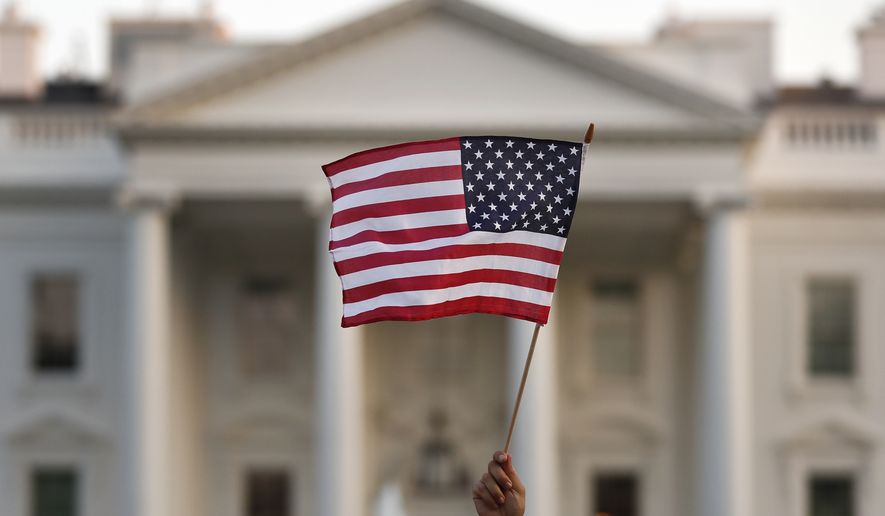The new citizenship test, which immigrants began to use this month, no longer includes a question dealing specifically with the right to religious freedom, one of the Constitution’s defining liberties.
It’s a startling move for the Trump administration, which has overall been a vigorous advocate of religious freedom across the government, said Alfonso Aguilar, who ran the Office of Citizenship in the Bush administration and oversaw the last rewrite of the test in 2008.
He made sure the religious freedom question was added to the test at that point because he thought would-be citizens should know about something so central to the American experiment.
“I’m surprised this is happening under this administration. I’m sure the president is not aware,” Mr. Aguilar said.
The citizenship test works under what Mr. Aguilar called the “catechism” approach: Those seeking citizenship are told to study a set of questions. When it’s time for the test, they are asked a small subset of those questions and must get 60% correct.
The previous version had 100 possible questions, and test-takers were asked 10. The new version has 128 questions. Test-takers are asked 20 and must get 12 correct to pass.
QUIZ: US Citizenship Test - Could You Pass?
Even with the expanded test materials, religion has been cut. It appeared seven times in the questions and answers of the old test but just three times in the new version. Gone entirely is the stand-alone question: “What is freedom of religion?” The correct answer: “You can practice any religion, or not practice a religion.”
U.S. Citizenship and Immigration Services, the Homeland Security Department agency that oversees legal immigration, said religious freedom is still “well represented” on the test and appears as an answer in three questions.
“The test continues to emphasize the fundamental concepts of U.S. government and American history that is found on the current naturalization civics test that has been administered in USCIS field offices since 2009,” said Dan Hetlage, a spokesman for the agency.
It’s not just religion that has been axed.
A question about the First Amendment is also gone. The new test no longer makes any reference to freedom of the press, one of five fundamental liberties, along with religion, that are guaranteed by the First Amendment, said Charles Haynes, founding director of the Religious Freedom Center at the Freedom Forum.
He said it’s perhaps not a surprise that the Trump administration would make those changes.
QUIZ: US Citizenship Test (Part II) -- could you pass?
“The 2008 answer to ’what is religious freedom?’ may not appeal to an administration that gives voice to those who view the U.S. as a Christian nation (see White House religious advisors),” he said in an email. “Moreover, the Trump administration focuses on claims by conservative Christians that their religious liberty is under assault in the U.S.”
Mr. Aguilar, though, said the changes were more likely made by career officials and escaped notice by political leadership.
Homeland Security began the process of updating the test in 2018.
Mr. Hetlage said the new test questions were “informed by an internal USCIS team, which included USCIS employees from a cross section of agency divisions.”
He said the point of the update was to have a test that “more accurately assesses applicants’ knowledge of U.S. history, government and values.”
“The revision has met USCIS requirements for efficiency and proper rigor, while ensuring the civics test is valid, reliable and fair, and that it complies with statutory and regulatory naturalization requirements,” he said.
USCIS is using the new test for people who applied for citizenship beginning Dec. 1. Those who applied before that are still using the old test.
Immigrant rights activists say there was no reason to change the test in the first place because there was no evidence that the old test was too easy.
They argue that 100 questions were enough to study and said asking 20 questions instead of 10 — even if it still requires getting 60% correct — is a needless barrier to earning citizenship.
“These changes are completely unnecessary, capricious and nonsensical,” said Arturo Vargas, CEO of the National Association of Latino Elected and Appointed Officials.
He said the Trump administration didn’t give community groups a chance to offer feedback on the revisions, and particularly how they would affect immigrants still struggling to learn English. He said the Dec. 1 effective date, just a couple of weeks after the test was finalized, gave groups too little time to prepare to help immigrants study.
But Mr. Aguilar, who designed the version that is being replaced, said with the exception of the religious freedom omission, the new test looks like a solid effort.
He said the test is a key part of the assimilation process because immigrants learn about their new home country as they study.
Indeed, a 2018 study by the Woodrow Wilson National Fellowship Foundation found only 36% of participants could get the 60% grade needed to pass. For immigrants, the passing rate — at least on the old test — is above 90%.
Mr. Aguilar said when he released the 2008 test, he faced many of the same complaints from activist groups predicting fewer people passing.
“To argue that this is some sort of obstacle is really a stretch,” he said. “What it does, it makes it more meaningful by having more questions — and not that many, it’s 28, and then asking 20. It encourages a more rigorous study, which I think it great.”
“If you can’t take this test, you can’t operate in society,” he said.
• Stephen Dinan can be reached at sdinan@washingtontimes.com.




Please read our comment policy before commenting.